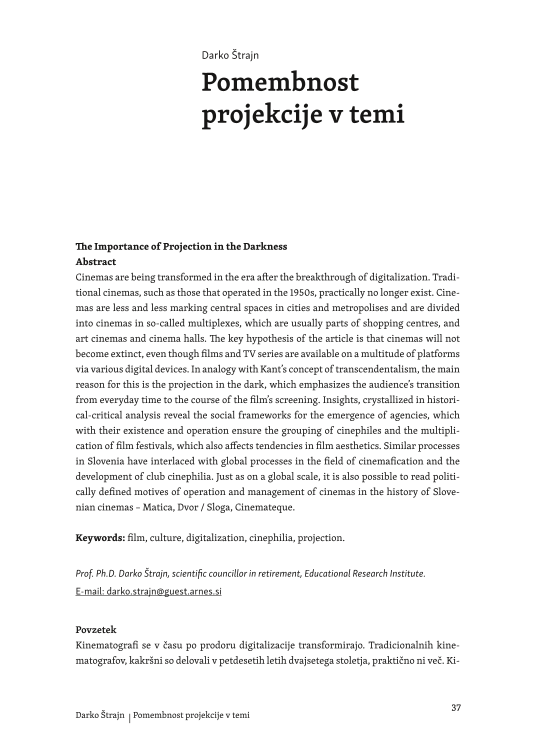Cinemas are being transformed in the era after the breakthrough of digitalization. Traditional cinemas, such as those that operated in the 1950s, practically no longer exist. Cinemas are less and less marking central spaces in cities and metropolises and are divided into cinemas in so-called multiplexes, which are usually parts of shopping centres, and art cinemas and cinema halls. The key hypothesis of the article is that cinemas will not become extinct, even though films and TV series are available on a multitude of platforms via various digital devices. In analogy with Kant’s concept of transcendentalism, the main reason for this is the projection in the dark, which emphasizes the audience’s transition from everyday time to the course of the film’s screening. Insights, crystallized in historical-critical analysis reveal the social frameworks for the emergence of agencies, which with their existence and operation ensure the grouping of cinephiles and the multiplication of film festivals, which also affects tendencies in film aesthetics. Similar processes in Slovenia have interlaced with global processes in the field of cinemafication and the development of club cinephilia. Just as on a global scale, it is also possible to read politically defined motives of operation and management of cinemas in the history of Slovenian cinemas – Matica, Dvor / Sloga, Cinemateque.




